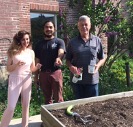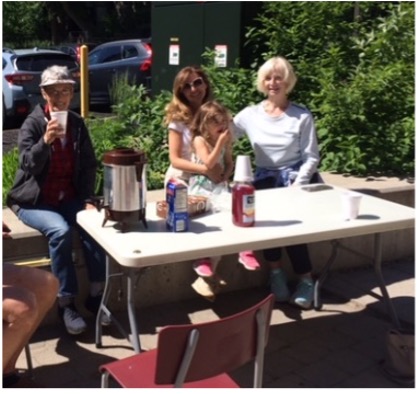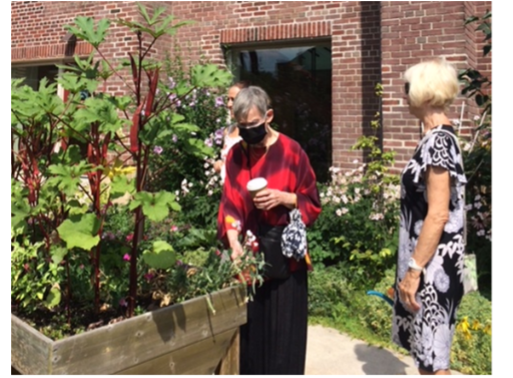Written by Hastings Withers:
Beach United Church’s gardening group is a small group comprised of members of the congregation and interested members of the local community, who would get together once a week on Saturday mornings to tend the church garden. The garden itself expanded three years ago from around the building to include landscaping around the parking lot.
The garden continued to be a wonderful mix of bright colours and imaginative new ideas – the latter evidenced by Matt and Andy planting tobacco in the veggie containers, producing giant bright pink flowers and a shed full of drying leaves which were shared with an indigenous group for ceremonial purposes.
Acknowledgements
That once again this lovely display reappears in our church garden is a tribute to the many members of the congregation who have generously donated plants, and to the past gardeners at Beach United. Special acknowledgement is due to Sally Evans and Matt Canaran, who have now indicated they can’t continue with the garden due to other priorities. They are featured in the pictures above with other regular volunteers.
In the left picture is Matt (centre) with Shah and Andy at the initial planting of vegetable beds in May. The centre pictures includes Lynne (left), the other regular member of the group. In the picture on the right, Sally is tending the fast growing okra in the veggie beds, which have been regularly watered and cared for by Britta (right).



The Vision: local plants, minimal watering
An important feature of this garden is that it concentrates on local plants adapted to our climate, which do not need regular watering. So, NO WATERING is the rule, (apart from some special cases: when planting, and the raised vegetable beds).
What it all adds up to.. “A garden of colourful flowers”. The picture at the top of this page shows the garden at its peak, in early summer. To be followed shortly by late summer’s colourful flowers, sumac, hosta, bee balm, Japanese anenome, brown-eyed susans – lorded over by the three gloriously blooming Roses of Sharon!
LOOKING FORWARD TO 2023… It will be challenging: the departure of Matt and Sally will leave a huge hole, and new avenues may be required to provide the expertise and time required to maintain the garden in its present form, perhaps including reconfiguring for a new future.
If you are interested in joining or assisting with our gardening group, please contact Hastings at: hastings@withers.ca
